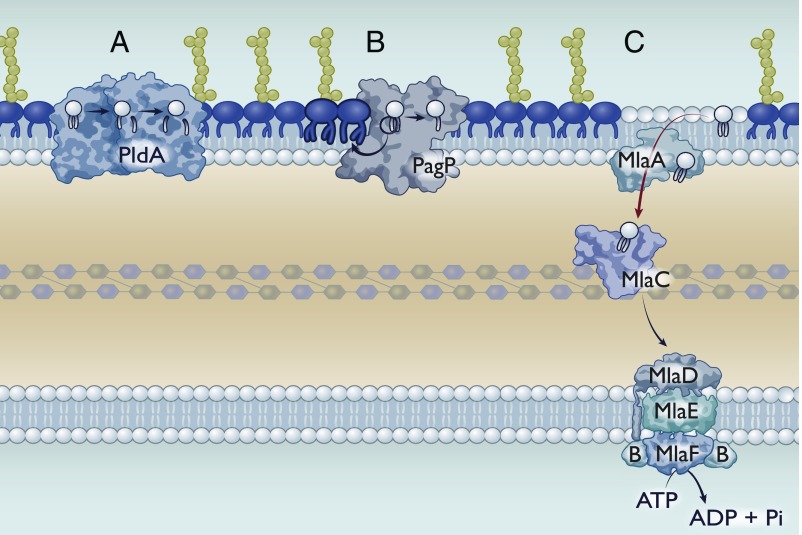Fig. 2.
Asymmetry maintenance mechanisms in Gram-negative bacteria. Gram-negative bacteria have multiple mechanisms to maintain asymmetry, although their presence or absence is species-dependent. (A) PldA is an outer membrane phospholipase that sequentially degrades GPLs. Its active site is exposed to the outer leaflet of the outer membrane, such that it can only degrade mislocalized GPLs. PldA can remove both the sn-1 and sn-2 fatty acids. (B) PagP is an outer membrane palmitoyltransferase that catalyzes the transfer of the sn-1 palmitate from a GPL to lipid A, resulting in a hepta-acylated lipid A species. The resulting lyso-GPL could be either removed via an unknown mechanism or degraded by PldA. (C) The Mla system for GPL transport. Importantly, we have depicted Mla as mediating retrograde transport; however, this perspective addresses evidence for both retrograde and anterograde transport.

